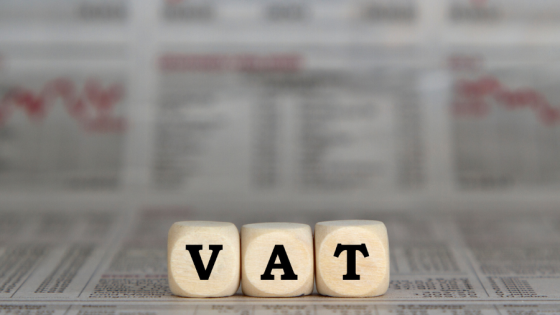CHANGES TO THE FLAT RATE SCHEME, 1 APRIL 2017
15 Mar 2017
With changes to the VAT Flat Rate Scheme only weeks away, please read our step by step commentary to make sure you are ready to comply.Categories & Tags
1. In his Autumn Statement, the Chancellor announced a major change to the operation of the Flat Rate Scheme (FRS). According to HMRC, this change was necessary to counter ‘aggressive abuse’ of the scheme.
2. The change takes the form of a new 16.5% flat rate applicable in certain circumstances. Bearing in mind that the ‘flat rate’ for a business using the normal method of VAT accounting and making standard-rated supplies is 16.67% , this is as good as removing the scheme altogether from businesses required to use the new rate.
3. It is not impossible that two thirds of users of the FRS will be affected by the change and are likely to want to cease using the scheme. Indeed, such is the impact of the change that it might have been simpler and easier for the Chancellor to have abolished the FRS altogether.
4. The new rate of 16.5% applies not to businesses in a given sector, as all the others do, but to businesses with a certain trading profile. A new concept of a ‘limited-cost business’ has been introduced. This means any business which has minimal expenditure on goods purchased for use in that business.
5. Any business purchasing goods (gross of VAT) to a value of less than £1,000 in a year, or less than a sum equivalent to 2% of their FRS gross turnover if this is a higher amount, must use the new rate. In this context, ‘goods’ has its normal meaning – that is, physical, tangible items. No purchase of any type of service will fall under this definition.
6. To complicate matters further, a business is not entitled to include in the value of goods counting towards the 2% or £1,000: any food or drink for consumption by the registered person or their employees; any cost relating to motoring (fuel or car parts, for example) unless the business is vehicle based in a certain way, such as a taxi firm; and any purchase of ‘capital expenditure goods’.
7. ‘Capital expenditure goods’, according to the existing FRS legislation, means ‘any goods of a capital nature’ unless they will be consumed within a year, or leased, or let or hired to third parties. Items such as laptops, printers and mobile phone handsets seem to fall into this definition, as potentially might a calculator or a stapler. Effectively, to be eligible for inclusion under the new rule, goods must be purchased for resale or be consumables, such as photocopier paper or printer cartridges.
8. The upshot of this is that, in order not to fall into the new classification of limited-cost trader, a business must spend a reasonable amount each year on qualifying goods. For a business dealing in goods, such as a retailer, this will not be difficult, but for a business dealing in services, it may well be very tricky.
9. A service-based business, no matter how high the value of purchases of services it makes, will be obliged to apply the new 16.5% rate unless it either has or can arrange purchases of qualifying goods (e.g. stationery, printer cartridges, pens, pencils, erasers, batteries etc.) in an amount of at least 2% gross FRS turnover or £1,000 p.a., whichever is the greater. Many businesses will fall well short of this.
10. Not only that, but the test must be applied on a pro rata basis for each VAT period, so that the expenditure on qualifying goods must exceed the limit in every period for a flat rate other than 16.5% to be continuously used.
11. It is likely that most service-based FRS businesses will be effectively forced to cease using the scheme. Not only is it inconvenient to have to review the percentage that must be used quarter by quarter, but also the normal method of accounting will in many cases now be more beneficial on account of the ability to claim conventional input tax.
12. For some service-based businesses on the FRS, the amount of conventional input tax may be quite significant. Regrettably, HMRC have found it impossible to gear the use of the new rate to the amount of purchases of both goods and services, but have linked it only to goods.
13. The reason for this is derived from the abuse that HMRC considered that they had identified. This took the form of agency workers, often in the construction sector, being encouraged by certain advisers to register for VAT on a voluntary basis and join the FRS with no other aim than to make a financial gain. The advisers in this scenario charge an ongoing fee for their services of preparing and submitting the VAT returns, which is of course a standard-rated service.
14. It is just possible that, as a result of the consultation that took place in respect of this proposed change, the provisions that will be introduced in 1 April 2017 will take a different form. One suggestion for addressing the perceived abuse, without having quite such a dramatic effect on businesses that can in no way be seen to exploiting the FRS for more mere financial gain, would be to remove the scheme from any business trading below the VAT threshold, for example. However, the strong likelihood is that the measure will take effect as planned.
15. Almost certainly, therefore, most service-based businesses (consultants, solicitors, accountants, actors, technicians, authors, journalists, architects, estate agents, etc, etc, etc) may find themselves obliged to cease using the FRS. HMRC estimate that about 30% of FRS users will be affected by the change, although experience suggests that it could be considerably more.
16.<span> </span>The aim of this note is to summarise the change and its impact in relatively simple terms. More detailed advice on any aspect or in relation to any specific circumstances can be provided if required.
16.5 Hopefully this isn't the FRS percentage you will need to apply! If so, please get in touch.
News & Resources

VAT – advantages of the VAT Flat Rate Scheme
More

Making Tax Digital for Income Tax
More

VAT if you sell your business
More

Spring Statement March 2025
More

VAT and the goods you use in your own business
More

What’s included in your VAT return
More

Claiming VAT on pre-registration purchases
More

What to Expect from the Chancellor’s Spring Statement 2025
More

